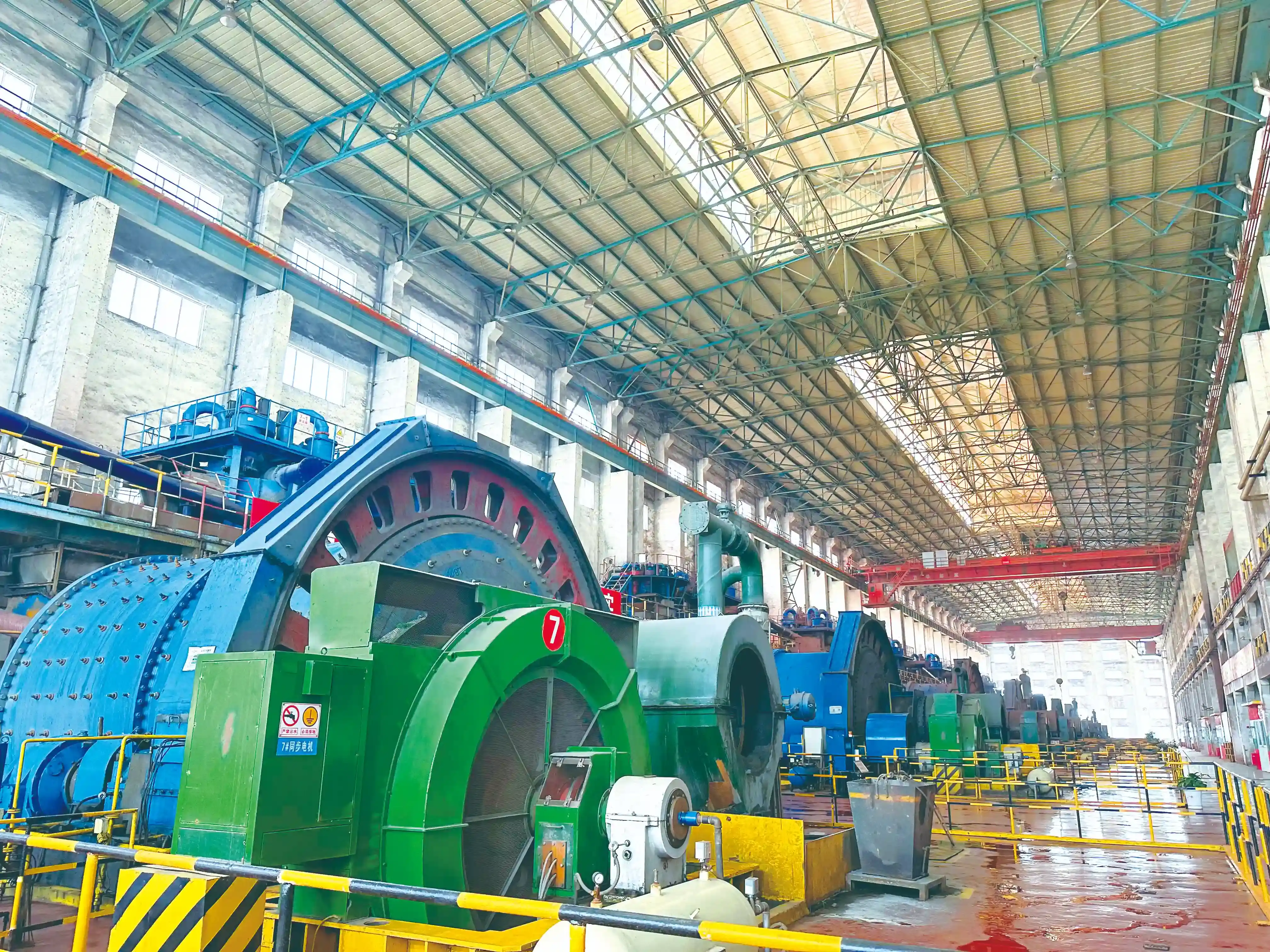In the realm of industrial grinding, steel balls for ball mills play a pivotal role in enhancing efficiency and productivity. These robust spheres are the unsung heroes of material processing, tirelessly working to reduce particle size and homogenize various substances. Whether you're in the mining, cement, or power generation sector, understanding the nuances of steel grinding media is crucial for optimizing your operations.

Top Benefits of Using Steel Balls in Ball Mills
The utilization of steel balls in ball mills offers a myriad of advantages that contribute to improved grinding performance and operational efficiency:
1. Superior Grinding Efficiency
Steel balls excel in their ability to impart high impact and compressive forces on the material being ground. Their density and hardness allow for effective size reduction of even the toughest materials, resulting in finer particle sizes and increased surface area of the final product.
2. Durability and Longevity
Constructed from high-quality alloy steel, these grinding media exhibit remarkable wear resistance. This translates to extended service life, reducing the frequency of replacements and minimizing downtime for mill maintenance.
3. Cost-Effectiveness
While the initial investment in steel balls may seem substantial, their longevity and grinding efficiency often result in a lower cost per ton of material processed. This makes them an economically viable choice for large-scale grinding operations.
4. Versatility Across Industries
Steel balls demonstrate adaptability across various industrial applications. From mining process balls to grinding media in cement production, their versatility makes them indispensable in numerous sectors.
5. Consistent Performance
The uniform shape and size distribution of steel balls for ball mill ensure consistent grinding performance throughout their lifespan. This reliability is crucial for maintaining product quality and meeting production targets.
How to Choose the Right Steel Balls for Your Mill
Selecting the appropriate steel balls for your ball mill is a critical decision that can significantly impact your grinding efficiency and product quality. Consider the following factors when making your choice:
1. Material Composition
The chemical composition of the steel balls affects their hardness, toughness, and wear resistance. High-carbon steel balls are suitable for general grinding applications, while chrome alloy steel balls offer superior wear resistance for more demanding tasks.
2. Ball Size
The size of the steel balls should be selected based on the feed material size and the desired product fineness. Larger balls are effective for coarse grinding, while smaller balls are better suited for fine grinding applications.
3. Ball Hardness
The hardness of the steel balls influences their wear rate and grinding efficiency. Harder balls generally offer better wear resistance but may be more brittle. Strike a balance between hardness and toughness based on your specific grinding requirements.
4. Mill Operating Conditions
Consider factors such as mill speed, load volume, and grinding environment when selecting steel balls for ball mill. These parameters affect the impact force and wear patterns of the grinding media.
5. Material Being Ground
The characteristics of the material being processed, including its hardness, abrasiveness, and moisture content, should guide your choice of steel balls. Match the grinding media properties to the material for optimal performance.
Maintenance Tips for Prolonging Steel Ball Life
Proper maintenance of your steel balls and ball mill can significantly extend the service life of your grinding media and improve overall mill performance. Implement these maintenance practices to maximize the longevity of your steel balls:
1. Regular Inspection
Conduct routine visual inspections of the steel balls and mill lining. Look for signs of excessive wear, deformation, or breakage. Early detection of issues can prevent more severe problems and unscheduled downtime.
2. Optimal Ball Charge
Maintain the correct ball charge level in your mill. Overcharging can lead to increased ball-on-ball collisions, accelerating wear, while undercharging reduces grinding efficiency. Regularly monitor and adjust the ball charge as needed.
3. Proper Mill Speed
Operate the ball mill at the recommended speed for your specific application. Running the mill too fast can cause excessive wear and energy consumption, while running it too slow may result in inefficient grinding.
4. Balanced Feed Rate
Ensure a consistent and appropriate feed rate to the mill. Overfeeding can lead to inadequate grinding and increased wear on the steel balls for ball mill, while underfeeding may cause unnecessary ball-on-ball contact and accelerated wear.
5. Water Management
For wet grinding applications, maintain proper slurry density and flow rate. Inadequate water can lead to increased viscosity and reduced grinding efficiency, while excess water may cause dilution and reduced impact forces.
6. Timely Ball Addition
Implement a regular schedule for adding new steel balls to compensate for wear and maintain the optimal ball charge. This practice ensures consistent grinding performance and prevents sudden drops in efficiency.
7. Lining Maintenance
Regularly inspect and maintain the mill lining. A worn or damaged lining can lead to increased steel ball wear and reduced grinding efficiency. Replace liners as needed to protect both the mill shell and the grinding media.
8. Contamination Control
Minimize the introduction of foreign materials into the mill. Contaminants can cause accelerated wear and potential damage to both the steel balls and mill components. Implement proper material handling and screening procedures to maintain a clean grinding environment.
9. Balanced Size Distribution
Maintain a balanced size distribution of steel balls within the mill. As balls wear down, add new balls of appropriate sizes to maintain the optimal grinding media composition for your specific application.
10. Documentation and Analysis
Keep detailed records of steel ball consumption, grinding performance, and maintenance activities. Analyze this data regularly to identify trends and optimize your grinding process for maximum efficiency and cost-effectiveness.
By implementing these maintenance practices, you can significantly extend the life of your steel balls, improve grinding efficiency, and reduce overall operating costs in your ball mill operations.
The world of grinding media for ball mills is vast and complex, with steel balls standing out as a reliable and efficient choice for many industrial applications. By understanding the benefits, selection criteria, and maintenance best practices for steel balls, you can optimize your grinding operations and achieve superior results.
At NINGHU, we specialize in manufacturing high-quality steel balls for ball mills, tailored to meet the diverse needs of industries ranging from cement production to mineral processing. Our commitment to excellence and innovation ensures that our customers receive grinding media that delivers exceptional performance and longevity.
Ready to elevate your grinding operations with premium steel balls? Contact our team of experts at sales@da-yang.com or sunny@da-yang.com to discuss your specific requirements and discover how our steel balls can revolutionize your ball mill performance.
References
- Johnson, M. (2022). "Advancements in Steel Ball Technology for Industrial Grinding Applications." Journal of Materials Engineering and Performance, 31(8), 6142-6155.
- Smith, R. A., & Brown, L. K. (2021). "Optimizing Ball Mill Performance: A Comprehensive Guide to Steel Ball Selection and Maintenance." Minerals Engineering, 170, 107001.
- Chen, X., Wang, Y., & Li, H. (2023). "Comparative Study of Grinding Media Materials in Cement Production: Steel vs. Ceramic Balls." Cement and Concrete Research, 163, 106885.
- Thompson, J. L. (2020). "The Impact of Steel Ball Quality on Mineral Processing Efficiency: A Case Study in Copper Ore Grinding." Mining Engineering, 72(10), 58-65.
- Garcia, E. F., & Rodriguez, C. M. (2022). "Enhancing Energy Efficiency in Ball Milling: The Role of Steel Ball Size Distribution." Energy, 239, 122451.
- Wilson, P. K., & Taylor, S. J. (2021). "Sustainable Practices in Grinding Media Management: Balancing Performance and Environmental Impact." Journal of Cleaner Production, 315, 128217.








